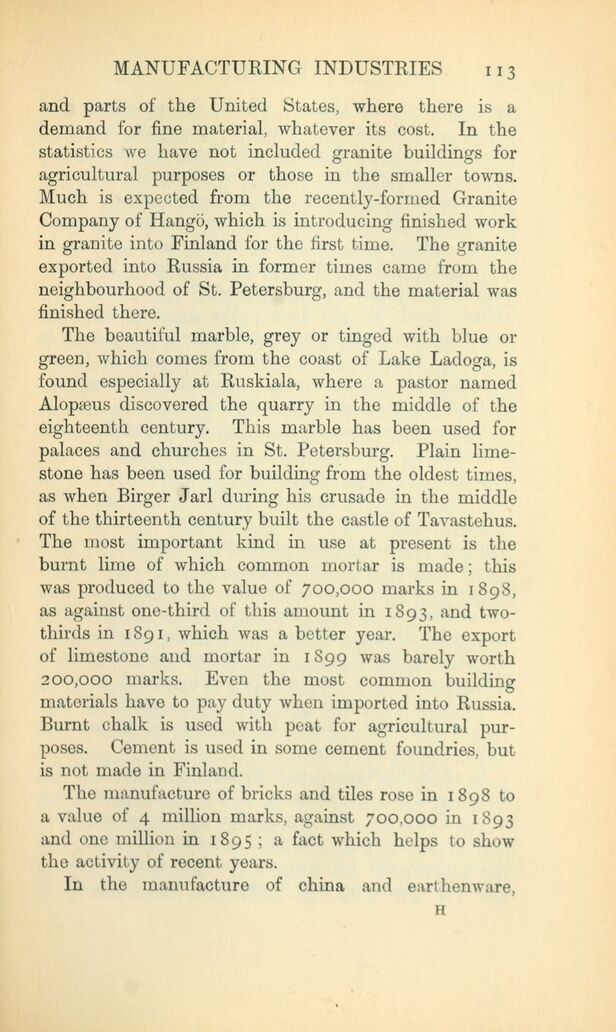
Full resolution (JPEG) - On this page / på denna sida - VI. Mining and Manufacturing Industries

<< prev. page << föreg. sida << >> nästa sida >> next page >>
Below is the raw OCR text
from the above scanned image.
Do you see an error? Proofread the page now!
Här nedan syns maskintolkade texten från faksimilbilden ovan.
Ser du något fel? Korrekturläs sidan nu!
This page has been proofread at least once.
(diff)
(history)
Denna sida har korrekturlästs minst en gång.
(skillnad)
(historik)
and parts of the United States, where there is a
demand for fine material, whatever its cost. In the
statistics we have not included granite buildings for
agricultural purposes or those in the smaller towns.
Much is expected from the recently-formed Granite
Company of Hangö, which is introducing finished work
in granite into Finland for the first time. The granite
exported into Russia in former times came from the
neighbourhood of St. Petersburg, and the material was
finished there.
The beautiful marble, grey or tinged with blue or
green, which comes from the coast of Lake Ladoga, is
found especially at Ruskiala, where a pastor named
Alopæus discovered the quarry in the middle of the
eighteenth century. This marble has been used for
palaces and churches in St. Petersburg. Plain
limestone has been used for building from the oldest times,
as when Birger Jarl during his crusade in the middle
of the thirteenth century built the castle of Tavastehus.
The most important kind in use at present is the
burnt lime of which common mortar is made; this
was produced to the value of 700,000 marks in 1898,
as against one-third of this amount in 1893, and
two-thirds in 1891, which was a better year. The export
of limestone and mortar in 1899 was barely worth
200,000 marks. Even the most common building
materials have to pay duty when imported into Russia.
Burnt chalk is used with peat for agricultural
purposes. Cement is used in some cement foundries, but
is not made in Finland.
The manufacture of bricks and tiles rose in 1898 to
a value of 4 million marks, against 700,000 in 1893
and one million in 1895; a fact which helps to show
the activity of recent years.
In the manufacture of china and earthenware,
<< prev. page << föreg. sida << >> nästa sida >> next page >>